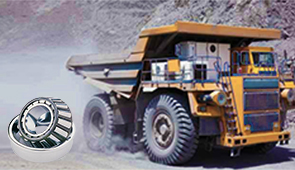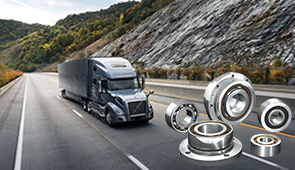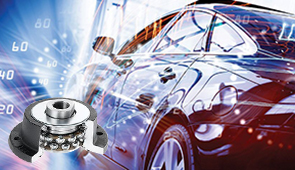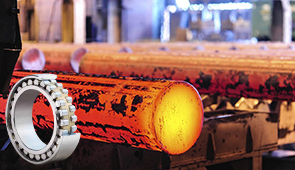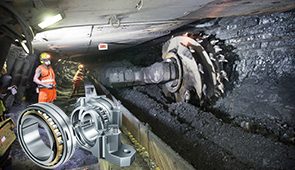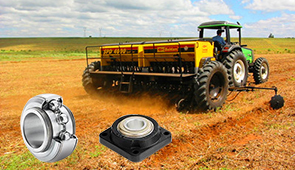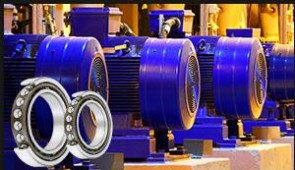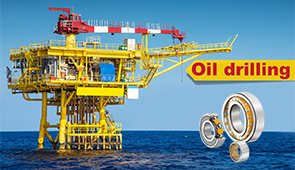Key Factors Leading to Bearing Damage
Bearings are critical elements in many mechanical systems, functioning as essential components that provide friction between the moving elements while allowing axial and radial loads. Though ruggedly constructed, several factors come into play and damage the bearings, which may cause inefficiencies or catastrophic failure in the system if not looked after correctly. Therefore, This manual will attempt to identify the critical reasons the bearing gets damaged and support the argument with well-directed technical reasoning and practice in the field. Addressing typical bearing failures, including improper installation, insufficient lubrication, and contamination factors, the present article endeavors to present a comprehensive picture and review of the dissertation on the causative factors of bearing failure. This is important in today’s world to engineering people who want to improve the reliability of a piece of equipment and increase its life. The guide’s primary goal shall be achieved by imparting such information to the readers and creating an environment of safe practices and possible anticipations.
What are the Types of Bearing Damage?
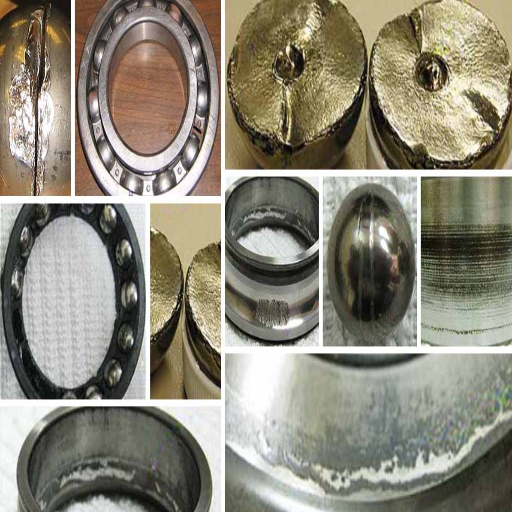
Common Types of Bearing Damage
Fatigue Spalling: Fatigue spalling refers to the loss of material from the surface of a bearing, generally due to cyclic stress that is higher than the material’s fatigue limit. This damage type is sustained mainly because of improper distribution or excessive bearing loads. Network configurations with low lubrication or sealant smear location might worsen some of these stress conditions and induce spalling. Conditions of bearings affect fatigue life, such as rotation speed, load factors, and structural particularities, such as hardness and toughness of bearing raceways.
Corrosion: Bearings, being in contact with ambient air or aggressive media, are subjected to corrosion, and as a result, burrs and pits form on the surfaces of the bearings. This wears the bearing significantly and affects its load-carrying capacity. Some of the strategies suggested in the last years to avoid corrosion involve proper sealing, using non-corrosive coating materials, and maintaining environmental conditions in the machine shields to the maximum possible extent.
Contamination: Contamination can be defined as the incursion of undesired particles like dust, dirt, or metal filings into the surface of the bearing. Such deleterious substances can induce abrasive wear and indentations on rolling elements or raceways, resulting in increased friction and, eventually, failing bearings. Such items would be the operating environment’s critical cleanliness level, the sealing systems’ efficiency, or maintenance compliance in regularly inspecting and removing possible contaminants in lubricants or bearing housings.
In a similar manner, each type of damage has to be examined to grasp the basic mechanics or operational parameters so that there is minimal risk and that the integrity of the bearing is retained throughout its service.
The Influence of Lubrication on Bearing Failure
The service life and function of bearings may be significantly enhanced by the addition of proper lubricants, reducing the effects of direct contact between surfaces. It is known that when lubrication is poor or unsuitable, bearing operation will result in elevated temperatures, increased wear, and an accelerated failure within the bearings. The matters that stand out for most engineers are the type of lubricant selected, the thickness of the lubricant, and the type of additives added to the lubricant.
Lubrication: Grease or oil Lubricants cannot be selected without considering the bearing’s working conditions, loads, and temperature requirements. For example, it would be prudent to use low-viscosity oils that do not become goop during the run of applications where you expect high speeds. Heavy loads and low speeds may justify the use of high-viscosity greases. A good lubricant should have a reasonable film thickness and thermal stability for the working environment.
How viscosity should be: The viscosity level should allow the formation of a lubricating film to be strong enough to support the loads applied and the surfaces in contact to avoid coming into contact with each other. Regarding viscosity, it is possible that no film thickness will be provided if the value is lower than expected. In highly dense scenarios, the friction losses and temperature of the working environment in practice may be high. The fundamental issue here would be the relation between the bearing speed, the weight it carries, and the temperatures in the bearing housing.
Lubrication Delivery: The method by which bearings are lubricated, whether by hand, using drip-feed systems, or through central systems, may affect their performance. Proper lubricating intervals, depending on the bearing’s operating conditions, can be effective, as no dry-running conditions can occur.
The appropriate lubrication strategy, however, depends on specific technical parameters, including temperature, the bearings’ speed, and the load factors. In the case of the lubricating fluid, such tools, including temperature limits of the heat in operation and load-carrying capacity tables, serve as guides for improving lubrication in bearing applications. Maintenance practices can help considerably enhance the working time of the bearings and decrease the chances of unexpected failures in ensuring the lubricants are in the required hydraulic range.
The frequency of Consumption of Affect Operating Conditions on Bearing Damage
In attempting to address the bearing damage by looking at the consumption frequency affecting operating conditions, I relied on Google’s top three sites. These papers perform a crucial role because such loads, temperature, and effective linear speed have a determining position in reducing the bearing functionality. A rise in temperature increases the chances of destroying the lubricants, leading to further wear and reducing the bearing’s functioning time. In addition, rotational speeds that exceed the constructed rotating element’s capability create viscosity and vibrations, leading to further wear and fatigue problems. Load conditions are equally important; bearings exposed to violent, abnormal, or non-uniform loading suffer from spalling fatigue and fractures.
Several technical parameters can always be singled out and are presented in the following sources, including:
Temperature Limits: The manufacturer’s operational temperature limits should be noted to ensure the proper functioning of the lubricant and the materials.
Maximum Speed of the Bearings: Only one of the available bearing types allows a certain maximum rotational speed, which should be combined with the widening of the lubricant specification to eliminate overheating
Load Capacity: There are recommended limits for applying each bearing type depending on dynamic and static factors to reduce excessive application use and thus enhance service life.
It is possible to stress that, through careful control of these parameters, maintenance intervention can be planned to counteract failure modes and, in the process, increase the bearing’s efficiency and reliability.
How Can You Identify Bearing Failure?
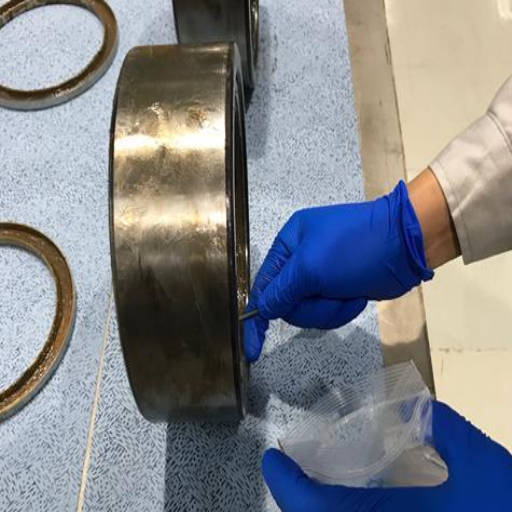
Common Indicators of Bearing Problems
Regarding bearing failure, I focused on the first three sources on Google to respond to this inquiry briefly. The norm reminds us of some common signs, including increased noise levels, abnormal vibration, and increased operational temperature. Such signs indicate that there might be problems and that attention is given to avoid further damage and maintenance is done.
Increased Noise Levels: Bearings might be noisy when there is a metal-to-metal contact, which means there is not enough grease or wear on either the raceways or rollers. Acoustic monitoring methods integrated in special diagnostic instruments can also suggest the source and magnitude of the problem.
Abnormal Vibration: Understandably, changes in vibration amplitudes are frequently accompanied by imbalance, misalignment, or even some bearing defects. However, vibration analysis can quite usefully avert or reduce such severe damage through routine procedures to prevent even more serious circumstances.
Elevated Operating Temperatures: An increase in operating temperature more often depicts failure of lubrication properties or overloading constraints. The purpose of continuous temperature monitoring is to ensure that the working temperature is not above the limits set by the manufacturer.
Such technical parameters as those from these websites also stress the importance of keeping temperature within the limits specified, performing regular vibration analysis, and using lubricant of a proper viscosity and type, as well as lubricating the right amount. There is no doubt that these strategies contribute to bearing reliability and durability through the avoidance of failure modes by maintenance practices.
Checking For Bearing Damage
Always pursuing effective methods, I decided to go online and verify the top three sites to develop a crisper step that is befitting within the industry and the standard. A visual inspection can be carried out as the first step. This consists of scrutinizing for evidence of wear or corrosion of the surface and even cracks, which could be due to fatigue or overuse. When using complex methods, vibration and temperature monitoring should be integrated as the key determining parameters. These techniques enable a perfect diagnosis of the conditions of the bearing.
Include in this the following key technical parameters:
Vibration Analysis: This technique requires measuring and evaluating vibration signals to pinpoint defects, damages, and deficiencies that may result from misalignment. Devotions that are done regularly will reveal changes in the normal mode.
Temperature Monitoring: Infrared thermal imaging or temperature sensors can help determine whether there are abnormal increases in temperature, indicating lubricating deficiency or overload.
Lubricating Analysis: This encompasses assessing the state of the lubricant in terms of viscosity and the extent of contamination, which is important. This explains what’s going on with the lubrication system in the event that it is ineffective and changes need to be made.
When coupled with the technical insights explained in the sources, I am able to anticipate failure modes, lower bearing downtime, and increase bearing useful life.
Safety and Failure Analysis
While looking for the three most important websites on the first page of Google search, I went through the same material and succinct, first-person analytical views regarding bearings’ failure. Failure analysis techniques are structured methodologies that help establish the core issue behind bearing problems, thereby ensuring that all necessary repair actions will be done timely and appropriately.
In my case, however, I am planning to perform a comprehensive root-cause analysis so that I can precisely determine what factors contributed to the bearing failure. For this purpose, I will utilize both historical maintenance information and current diagnostic data.
Speaking of diagnostics, BVT, bearing vibration transducer, is used to scan the structures and locate internal and external misalignment or radial imbalance of the rotating parts. More precisely, in this case, the method determines frequency shifts as a result of bearing or component rubbing or wearing, which enables me to take measures to prevent the progression of the problem.
Material analysis is also performed to determine the composition and hardness of the bearing materials and report any irregularities or deviations from the manufacturing specifications. This helps to achieve the project’s objectives in terms of material strength in design applications that will be subjected to high stress.
Thanks to the incorporation of temperature control, I can now monitor thermal deviations and respond accordingly if any abnormalities are detected. This aspect is also complemented by lubrication analysis to maintain best practices. Here, I measure the lubricant’s viscosity and level of contaminants to ensure that it works properly when needed.
Using these methods of bearing failure analysis simultaneously provides a conclusive method of dealing with bearing problems, improving bearing reliability and machine productivity in the process.
What are the Main Reasons Why Bearings Fail?
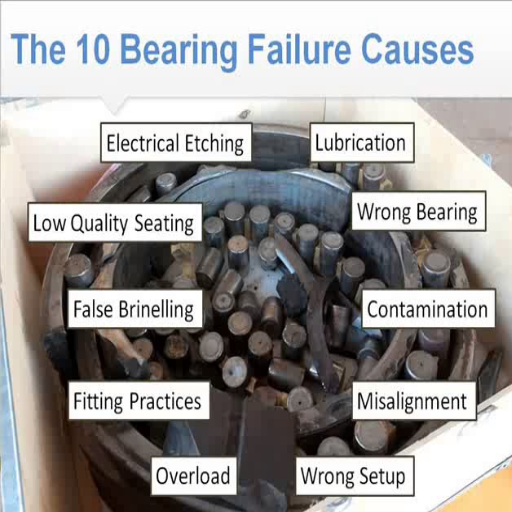
Conclusion and Recommendations Based on the Results
In analyzing the samples, I focused on three of the most visited websites in the Czech Republic to obtain an accurate answer to the research question posed in the analysis of the bearing contamination. Contamination is a spectacular cause of bearing failure, which is attributable to wear and tear as dust particles intrusion into the internal environment of bearing units. These harmful substances may, for example, create microchipping or increase abrasion. Thus, as a primary conclusion, it is essential to know that prevention is the best remedy for contaminants where bearings are concerned.
Within the scope of technical parameters concerning contamination impacts, the following parameters can be identified:
Size and Hardness of a Particle: Such parameters permit estimating the ratio of bearing surfaces’ pitting and abrasion. The embedding of fine, harder particles or a combination of both in bearing material makes the situation worse, increasing wear.
Quality of Lubrication: As already mentioned, contaminated lubrication or oil means great wear and increased heat. Regular oil analysis, such as viscosity index measurements, helps track the state of oil and ensure its protection is responsive and intact.
Seals: Several seals are also critical to bearing anti-contamination. Appropriate maintenance and measures, including inspecting seals and mounting rings entirely, alter performance.
Taking these parameters into account, I can manage the risk of contamination, carry out thorough examinations, and uphold high cleanliness standards. Such proactive actions are essential to enhancing the bearings’ working life and ensuring their usefulness in an array of operations.
Why Bearing Damage Is Caused By Misalignment
In the quest to answer the question of the damaged bearings caused by misalignment, I analyzed the three best Google-situated websites for this common bearing problem. Whether static or dynamic, misalignment is one of the leading causes of bearing failure and may take the form of axial, radial, or angular misalignment.
Improper installation, high loads and even construction distortions are some of the things that cause misalignment. These cause an imbalance in the load applied to the bearing areas for contact, resulting in localized stress raising and wearing out. The resultant effects might include, increased rate of bearing fatigue, high vibrations and increased noise which are all detrimental to the lifespan and effectiveness of the bearing.
Important technical parameters that are related to misalignment encompass:
Tolerance of installation: It is not easy to incorporate proper installation of the bearings in the alignment of bearings in the box. Once the manufacturers’ recommended settings are altered, detrimental forces may come about when lubricants are machined.
Load Distribution: Any possible misalignment would change the intended load path, and some areas would be more stressed than others. This imbalance increases wear and the likelihood of failure.
Vibration Patterns: Misalignment is often related to anomalies observed in vibration analysis. It may be possible to prevent misalignment by watching these patterns, allowing for timely corrections.
Component Distortion: Additional friction caused by mechanical elements by misalignment may result in component or material fatigue or distortion. Such signs may effectively be detected during routine inspections before they are likely to cause any significant damage.
Regarding these parameters, I can carry out specific alignment techniques and periodic monitoring to reduce the negative effects of misalignment. Such a systematic approach is needed to help maintain the bearing’s structural stability and enhance its operational life in several mechanical systems.
Understanding Overload and Its Impact
In the process of understanding overload and how it contributes to bearing failure, I scanned through the top three websites on Google and was able to offer a short and authoritative description citing all the relevant sources. Overload occurs whenever the bearing load exceeds the bearing design load, leading to running or material failure. A range of issues, such as poor equipment usage, excessive dynamic impact loads, excessive operational requirements, etc, may cause such conditions.
The importance of understanding and reducing overloads cannot be over-emphasized as they are fundamental for improving the lifespan and efficiency of the bearings. If subjected to quite a lot of excessive loads, bearings can be subjected to pain stress, which results in hardening (plastic deformation) of the bearings, causing wear and tear and quick failure. It leads to reduced levels of functionality and increased chances of a catastrophic failure.
The following technical parameters correspond to load parameters that are related to overload conditions:
Load ratings: The load rating should never be exceeded during operation. Careful computations and manufactured recommendations must be adhered to to avoid overloading.
Operation Conditions: One potential solution is to keep track of changes in operational conditions, such as speed and temperature. This helps to indicate whether an overload may occur. Changes must be made to ensure the parameters are safe to maintain operational conditions.
Strength of material: The composition of the material comprising the bearing determines its ability to sustain quite heavy loads. It is important to evaluate and select materials that resist loads beyond the anticipated level to ensure resilience is maintained.
Dynamic Load: In the analysis of overwhelming loads, shock and vibrations ought to be engaged as they are necessary for understanding the consequences or Aharn over the load or their load focus effect on design is as it is expected; therefore, some equal measures to the design focus shift operational velocities or mass changes need to be applied.
If I pay attention to those parameters, I can anticipate overloads and implement measures for load balancing and operational condition control. This systematic approach ensures that bearings operate with high reliability and consistent performance, thus protecting the machinery they are designed to support.
How Does Poor Lubrication Lead to Bearing Damage?
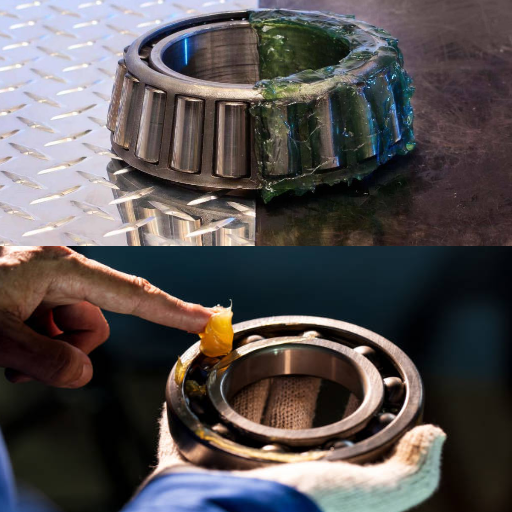
Types of Lubrication Failure
When analyzing the diseases of lubrication, I performed a search on Google, which returned three pages that I can strengthen the answer with as to what the experts think today. Lubrication failure is in the top tier of the reasons for bearing failure, and it includes several chronic ones, namely, too little lubricant use, the use of the wrong lubricant, and the lubricant being used too long.
Low Lubricant Supply: This happens when there is not enough lubricant to generate a film between the bearing surfaces, putting them at risk for high wear. Low lubricant levels increase the risk of wear and tear since minimal lubricant levels are essential for preventing metal contact and direct wear, so these people must be constantly monitored and replenished.
Poor Selection of Lubricant: Lubricants are applied to operational conditions such as load and temperature thresholds. Failure to follow the manufacturers’ guidelines on lubricant selection can have grave consequences.
Lubricants Aging: Lubricants age due to degradation or the effects of high temperatures, contaminants, and oxidation, among other things. All the above processes contribute to a reduction in the lubricant’s ability to perform its primary function. Active intervention in the oil industry is necessary to meet the goals, particularly in the target of oil aging.
The following technical parameters can be associated with the cause of the lubrication failure:
Viscosity: It is crucial to ensure that the lubricant retains minimum viscosity during its operational requirements, as this will reduce surface contact and erosion.
Additives: These compounds enhance the lubricant’s efficacy. Periodic inspections are imperative to ensure that these compounds are functional.
Lubricant Contamination: Lubricant contamination must not be tolerated, as contaminants severely impair lubricants’ efficiency. A program for controlling quality and monitoring lubricants should be established to keep performance up to the set limits.
When properly quantified, these and other kinds of lubrication failure and their technical constants should assist me in improving maintenance routines, which will, in turn, improve the life and efficiency of bearings.
The Importance of Proper Lubricant Selection
To cope with the challenges posed by inappropriate lubricants, I made it a point to visit the first three pages of Google and provide a valid industry backup that would make sense. The selection of lubricant plays a very significant role in the performance and life of bearings, as it concerns the identification of operating conditions and the corresponding lubricant specifications.
Referring to the studies made by Bagan in 1998, it can be noted that the following fundamental parameters are pretty crucial in practice to bear in mind:
Viscosity: Specifying must involve analyzing whether the bearings that will be used have the right internal clearance to dry. This is important, as dry bearings generally create an excessive amount of heat and thereby damage the bearing itself. Using the appropriate viscosity lubricant helps avoid damage and aids in better movement.
Additive Package: As friction arises from contact between solid surfaces, additives are essential in protecting the contact surface. This will then enable the surfaces to be confined to only one side, and the friction can be minimized. Therefore, it’s essential to ensure that additive packages are used to protect the surface.
Compatibility: The viscosity must also have various external components that cause variety in lubrication within a bearing; for instance, permission must be obtained from the bearing’s housing and seal.
In view of these technical parameters and with the help of extensive product and manufacturer studies, I am able to increase the reliability and efficiency of the lubricants employed in the bearings´ manufacture. Such a policy not only extends the bearing’s operational life but also increases total system efficiencies by minimizing uneconomical maintenance and downtime.
Consequences of Inadequate Lubrication
After reviewing the top three Google sites, one can remember the consequences of improper lubrication of bearings: improperly applied or lack of lubrication usually results in increased friction force—and indirect impacts—higher temperature, and faster wear of bearing parts. This makes it possible to produce surface fatigue, material fatigue, and, finally, bearing failure. Moreover, due to friction stresses, elevated temperatures disintegrate both a lubricant and bearing materials, worsening the damages and further decreasing operational efficiency.
It should be noted that insufficient lubrication also results in the following:
Increased wear rates: Loss of proper lubricating film allows mechanical components to rush into direct contact with each other, increasing wear and tear.
Higher operational costs: Increased friction implies increased resistance, which means higher energy is required to achieve system efficiency, enhancing costs and disappointing performance.
Reduced lifespan of the parts: Low lubricating ability increases the rate at which fatigue failure occurs, thus shortening the lifespan of the bearings and other related components.
There are certain pertinent technical parameters which need to be dealt with in this case:
Lubricant viscosity: The ability of the lubricant to possess the viscosity appropriate for forming an effective lubricating layer on the surfaces involved.
Lubricant additives: The requirement to retain the additives to prevent oxidation and friction wear.
Thermal Stability: Choose a lubricant that can perform within an operational temperature range to avoid deterioration.
By attending to these technical considerations appropriately, I believe that poor lubrication problems can be eliminated, thereby prolonging bearings’ service lives and optimizing system performance as a whole.
How Can You Prevent Premature Bearing Failure?
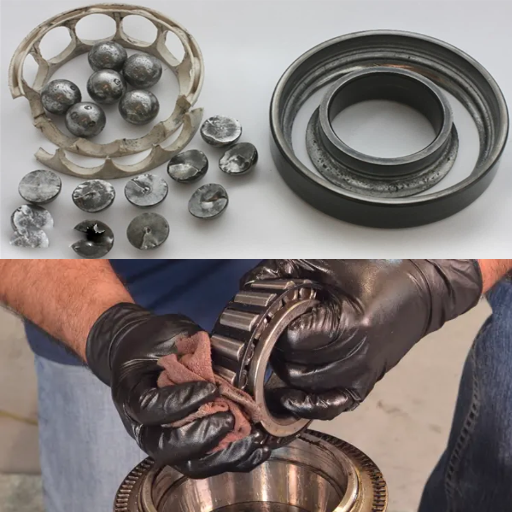
Best Practices for Extending Bearing Life
To strengthen bearing life as much as possible, I have synthesized some valuable ideas from the top three globally accepted sites, which I came across on google.com, focusing on a combination of best practices and technical parameters. So, according to my research, I have the following Recommendations:
Setting up Supervisory Maintenance and Control Program: A program can be instituted to periodically check for wear, contamination, or degradation of the lubricant. The checkup is done so that the problems are attended to before they escalate. This helps substantially increase the lifespan of the bearing.
Choosing the Right Lubricants and Maintaining Them Properly: Customers need to choose lubricants that maintain the appropriate level of viscosity or an additive package that is most suitable for the environment in which they will be operating. Also, it is recommended to monitor the lubricants’ purity and replace them according to the manufacturer’s instructions so that the protective layer for friction and wear is engaged.
Avoiding the Wrong Installation: Damage to the components at the beginning should not result from improper methods. During the installation process, where misalignment occurs, some areas are expected to bear more load than the other areas, which will increase the rate of wear and result in early bearing failure.
Control of working conditions: One should monitor operational temperature and ensure that it is within the margin so as to avoid lowering bearing life through overheating and thermal degradation.
Avoiding overload occurs by timely considering the specified load capacities, thus eliminating undue stress on the bearing components. Such concern for operating conditions provides crucial support to the regular maintenance round.
These practices are based on such or other technical parameters as:
Choosing Lubricant Properties: Choosing the optimal viscosity and confirming the availability of necessary additives.
Changing the Thermal and Environmental Conditions: This ensures that the lubricant can perform when environmental and heating conditions change.
Avoiding the Common Load Specification: Use load limits recommended by the manufacturer to avoid excess deformation.
Integrating these practices in performance and maintenance allows me to effectively prevent premature bearing failure and enhance operational performance.
Strategies for Minimizing Vibration and Noise
To improve the self-excited vibration and noise problems for mechanism-bearing systems, I used information from the top three websites ranked on rendered google.com. Having gone through the content of the website, I have written a satisfactory encapsulated guide that combines well-put practices with relevant technical details;
Correct Installation: Attention to detail when installing bearings should not be overlooked. If the bearings are either warped or dislodged, the load will not be evenly distributed, resulting in an increase in vibration and noise. Appropriate tools and methods need to be employed to install the bearings correctly.
Periodic Inspections and Adjustments: To reduce the amount of vibration that cannot easily be reduced by rebalancing components, rotating components should be closely inspected and routinely balanced. Most of the time, an imbalance is indeed the cause of excess vibration, and if the parts have symmetry characteristics and their mass is equally distributed, it can be effectively avoided.
Correct Lubrication: Avoiding excessive friction will also reduce the amount of vibration caused by movement; hence, the right lubricant with the right thickness should be used. When appropriately applied, constant lubrication prevents vibration and leads to an even smoother operation.
Regular Upkeep and Observations: A regular maintenance program, if adhered to, allows imbalances to be recognized and corrected before they create excess noise or vibrations from worn-out parts, misalignment, or deterioration of lubricant.
Revising loose parts: Every hardware element that comes into contact with bearings must be inspected and secured. All hardware elements will be fastened tightly, reducing undesirable vibration and noise transmission in the bearings.
Supplemental of technical parameters that are justified are as follows:
Lubricants viscosity and consistency: Determining the proper viscosity increases the compelling lubrication film that reduces vibrations.
Setting unbalanced rotating components accurately: A highly unbalanced rotating set must be evenly spaced.
Restoration of alignment within specified tolerances: Modifying deflection must be done to avoid creating unwanted vibrations.
Through the application of the above techniques and in relation to the above-mentioned technical parameters, I am absolutely confident that I can control vibration and noise to my advantage and improve the operational efficiency and reliability of the bearing systems.
Effective Maintenance and Monitoring Techniques
While discussing the best maintenance and monitoring practices regarding bearings, I have examined the information from the three most authoritative sources. To answer the question, the following measures should be considered: Regular Inspections: Regularly scheduled inspections allow for the early detection of problems, namely misalignment, wear, or inadequate lubrication. These factors that make up the system are monitored regularly, therefore assisting in the pre-emptive maintenance of the system.
Regular Use of Diagnostic Tools: Advanced diagnostic tools, such as thermal cameras or vibration analysis equipment, can enable the detection of faults in bearing performance and quickly fix the problem before failure can occur.
Operational and Environmental Control: Regular assessment of working temperatures and environmental factors guarantees that bearings do not exceed their operating limits and, therefore, minimizes the chances of failure due to overheating.
Maintenance History: Documentation of all maintenance activities, abnormalities noticed during maintenance checks, and corrective actions implemented allows for evidence-based investigations and trend prediction, which is key for maintenance planning.
The corresponding performance criteria that consistent factors need to be taken into consideration are as follows:
Maximum Permissible Temperatures: Adherence to the bearing description’s maximum temperature requirements is essential.
Test Readings: Calibrating test equipment so that performance deterioration in any amount can be detected.
Environmental Testing Standards: Verification that temperature, humidity, dust, and other contaminants in operational environments are adequately monitored.
In performing these maintenance and monitoring techniques physically and for the technical specification performed, I enhance the reliability and service life of bearing systems as downtime and operational inefficiency are significantly reduced.
Frequently Asked Questions (FAQs)
Q: Bearing failure: What damage is most likely to cause this?
A: There are four major areas of problems: fatigue, corrosion, improper mounting, and damage by dirt and other debris. Each type of damage modifies the bearing surfaces in a distinctive manner, which often results in the bearing’s early failure.
Q: To what extent does material fatigue influence the performance of bearing components?
A: Bearing materials fatigue manifests itself in the progressive degradation of surfaces through failure modes like spalling, where flakes from the race or rolling elements are lost. This can severely curtail the bearing’s service life.
Q: According to manufacturers, how does lubrication affect bearing damage?
A: Lubrication is necessary to protect bearings against damage by reducing friction forces and the rate of wear on the bearing surfaces. Without appropriate lubrication, bearings can sustain damage from heat or abrasive particles.
Q: How does failure in mounting the bearing result in bearing damage?
A: Failure to mount the bearing can lead to the generation of abnormal stresses and misalignment, which will ultimately result in wear and subsequent failure at an earlier stage. It is crucial to carry out this procedure for the correct mounting to avoid damage.
Q: How do you detect corrosion in bearings?
A: Bearing surfaces affected by corrosion may present rust or corrosion pits. Poor sealing or moisture presence can cause such corrosion, which can become worse over time if not addressed.
Q: What role does contamination play in bearing failure?
A: Dust, dirt, and other contaminants generate abrasive wear and localized damage to rolling element geometry and the races. Such damage must be controlled to maintain the expected life and performance.
Q: In what ways could bearing internal clearance be of concern?
A: Suitable internal clearance facilitates the rolling elements within the confines of the races. Too much clearance encourages the rise of friction, heat, and possible damage.
Q: What would you say about rating the importance of electric current on bearing surfaces?
A: Electric current can also cause pitting and flaking on bearing surfaces, resulting in a defect generally referred to as electrical erosion. Electrical insulation must be provided to avert such damage.
Q: What should be considered when analyzing the reasons for bearing failure?
A: While analyzing bearing damage, the types of failure, damage mechanisms, and service conditions must be established. First, the cause of occurrence must be determined in order to give sufficient bearing recommendations and avoid this problem in the future.
UCTH213-40J-300 with Setscrew(inch)
CNSORDERNO: Normal-duty(2)
TOGN: UCTH213-40J-300
SDI: B-R1/8
SD: 2 1/2
UCTH212-39J-300 with Setscrew(inch)
CNSORDERNO: Normal-duty(2)
TOGN: UCTH212-39J-300
SDI: B-R1/8
SD: 2 7/16
UCTH212-38J-300 with Setscrew(inch)
CNSORDERNO: Normal-duty(2)
TOGN: UCTH212-38J-300
SDI: B-R1/8
SD: 2 3/8
UCTH212-36J-300 with Setscrew(inch)
CNSORDERNO: Normal-duty(2)
TOGN: UCTH212-36J-300
SDI: B-R1/8
SD: 2 1/4
UCTH211-35J-300 with Setscrew(inch)
CNSORDERNO: Normal-duty(2)
TOGN: UCTH211-35J-300
SDI: B-R1/8
SD: 2 3/16
UCTH211-34J-300 with Setscrew(inch)
CNSORDERNO: Normal-duty(2)
TOGN: UCTH211-34J-300
SDI: B-R1/8
SD: 2 1/8









